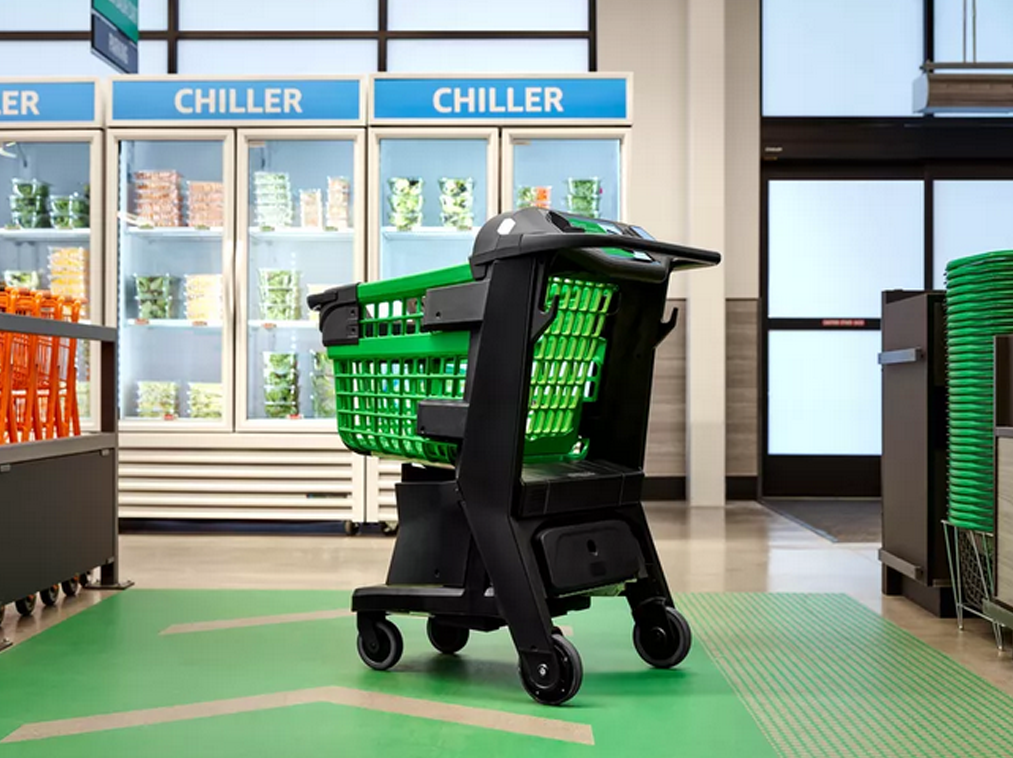New Amazon shopping cart lets you check out without tills
The cart is launching in a Los Angeles store later this year

Your support helps us to tell the story
From reproductive rights to climate change to Big Tech, The Independent is on the ground when the story is developing. Whether it's investigating the financials of Elon Musk's pro-Trump PAC or producing our latest documentary, 'The A Word', which shines a light on the American women fighting for reproductive rights, we know how important it is to parse out the facts from the messaging.
At such a critical moment in US history, we need reporters on the ground. Your donation allows us to keep sending journalists to speak to both sides of the story.
The Independent is trusted by Americans across the entire political spectrum. And unlike many other quality news outlets, we choose not to lock Americans out of our reporting and analysis with paywalls. We believe quality journalism should be available to everyone, paid for by those who can afford it.
Your support makes all the difference.Amazon has launched a new range of shopping cars that tracks the items placed into them and automatically charges customers when they remove the bags.
The ‘Dash Carts’ use weight sensors and cameras to scan and measure the items.
For fruits, vegetables, and other loose items, customers type in the item’s four-digit code and how many they are buying, and the cart will calculate the price and weight.
It is also equipped with a coupon scanner, and will add and remove items as customers do.
Dash Carts will have a designated line at the store, and is designed for small to average shopping trips. It is large enough to fit approximately two full shopping bags in it.
The cart will make its debut at a new Los Angeles supermarket Amazon is opening later this year.
While the store will also have staffed checkouts, the carts can be used to bypass queues.
Since the supermarket has a “huge catalogue of items,” according to Amazon’s vice president of physical retail and technology Dilip Kumar, there were difficulties in designing the cart.
“You need to be able to add that and keep track of all of that and it just increases the complexity,” Kumar told CNBC in an interview.
“Plus, the weighing component of it also has to be very robust to be able to allow for a very accurate receipt experience for a customer.”
“We try to hide that complexity away from customers so you don’t have to learn any new shopping behaviours,” he also said.
“Once you’re signed in with your phone, you can put the phone away and your normal way that you shop stays the same.”
In the future, it is possible that the technology could come to Whole Foods stores, which are owned by Amazon, or sold to other companies.
However, Amazon declined to say whether it would be purchasing the kart to other retailers.
“As with everything we do, we'll launch it, we'll get customer feedback and then we'll go from there,” Kumar told Cnet.
The Dash Cart concept is like Amazon Go, which the company introduced in 2016, allowing customers to simply pick up items and leave the store without going through a conventional checkout.
The money is removed from users Amazon accounts automatically.
However unlike Amazon Go stores, which have cameras and sensors built into the ceiling in order to monitor customers, the Los Angeles store will not have such surveillance equipment built in.
Amazon has not said why it is designing for more traditional purchasing experiences, but it is speculated that it could be because the Amazon Go model is challenging to scale to larger supermarkets.
It could also be that having sensors in a shopping cart is more palatable to shoppers than being constantly tracked.
Join our commenting forum
Join thought-provoking conversations, follow other Independent readers and see their replies
Comments